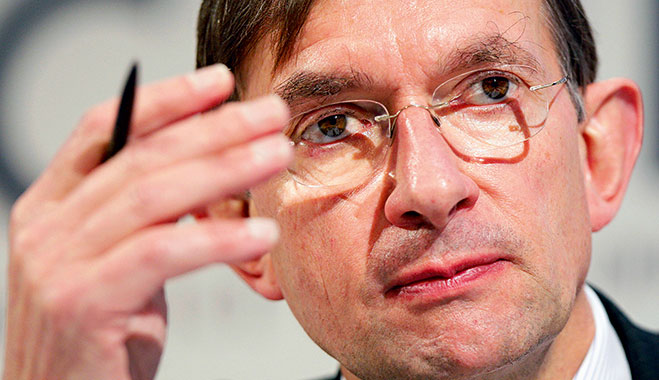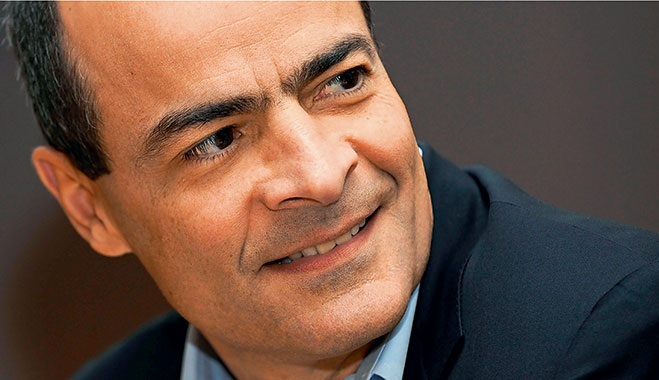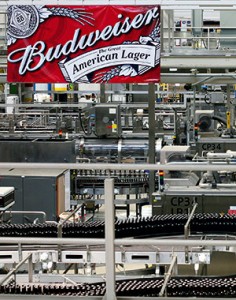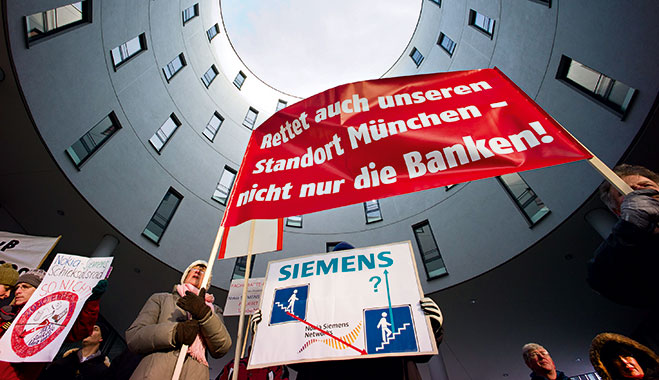
Mergers and acquisitions can be extremely lucrative and guarantee long-term success for the companies involved. They can also open the door to all manner of ill fate, like lost revenues, mass redundancies and even bankruptcy. Mergers between companies happen for an array of reasons: market share expansion, acquisition of a new variety of lines, buying in valuable complementing technology, or even to reduce operation costs. A successful merger will always drive up shareholder value in the long run.
According to Wharton Business School professor Martin Sikora, editor of Mergers & Acquisitions: The Dealmaker’s Journal, one-third of mergers create shareholder value, whereas one-third destroy it, and another third don’t meet expectations at all. There have been hundreds of studies conducted over the years on the long-term results of mergers, with researchers estimating the range for failure to be between 50 and 80 percent.
But 17,836 mergers and acquisitions still took place in Europe in 2011, according to research by the Institute of Mergers, Acquisition and Alliances (IMAA). Dr Christopher Kummer of Webster University in Vienna, President of IMAA suggests that overconfidence from managers plays a significant role in mergers: “In many cases, it looks like the management has an overconfidence that they will do better in M&A than others,” he explains. “There’s also a variety of other reasons that leave companies with little other options than to do acquisitions. For example, in developed markets there is hardly any other way to gain market shares, while in emerging countries M&A might prove to be a very good entry to the market.”
Sometimes even the best-planned and executed mergers go awry not very long after the launch. There is no single reason why mergers fail. In fact, in most cases, many variables influence the outcome of any business deal, from cultural differences to global market conditions.
J Fred Weston, Professor Emeritus in Finance at UCAL, suggests that mergers can be quite straightforward. “When a firm is well managed and has good core capabilities, it can use a merger to round these out and extend its reach.” A merger should be a way of enhancing a good company, “by extending tech capabilities and market products, for example. The companies merging should be related and standing where they are already strong”.
Not only a vehicle for growth, mergers and acquisitions have a unique destructive power, when large corporations engage in acquisitions in order to solidify their competitive advantage by cornering the market through the buyout and subsequent dismantling of small competitors. The EU does, however, monitor this type of activity very closely and has a set of stringent competition laws to prevent monopolies being developed. But an M&A boom follows a bust two out of three times, and often, only time will tell what deals are for life, and which will end in divorce.
The good
Royal Dutch Shell (2004)

The merger between Shell Transport & Trading (STT) and Royal Dutch Petroleum (RDP) is unusual. The two merging companies were perfectly poised for a successful merger; they had worked closely together for over 100 years and the transition was smooth. Both companies stood to gain from the merger – a stronger Shell meant more profits for everyone involved.
The long history between the two companies cannot be downplayed in the merger, playing a huge part in its success. Before the deal was struck, both companies already retained a very healthy dual-ownership over the Anglo-Dutch oil producer Shell. So in 2005 when shareholders approved the plans to merge both co-owners into a single company worth $220bn, they were already halfway there.
As far as M&As go, this was a relatively straightforward one. STT and RDP merged to form Royal Dutch Shell. With just one board of directors and one CEO the company was streamlined and more centred than Shell had ever hoped to be before the merger. At the time, over 98 percent of Dutch and 96 percent of British shareholders voted in favour of the merger.
After the merger Royal Dutch Shell quickly rose to the spot of the third largest listed oil group by market capitalisation. Because the company had Dutch and British owners, it was decided that it would be primarily listed on the London Stock Exchange with secondary listings in Amsterdam. The company’s headquarters were kept in The Hague.
Until 2005, RDP owned a hearty 60 percent of Shell, while RTT took care of the remaining 40 percent. The merger was prompted in part by a management crisis caused by the revelation that the company had been overstating its oil reserves. Chaos ensued, there was a loss of confidence in the company and the group was fined £17m by the British Financial Services Authority (FSA). The company’s oil reserves were downgraded ,which in turn sent the stock spiralling down. The crisis culminated in the dismissal of former chairman Philip Watts and other high-ranking directors. The merger was conceived as a solution to simplify the chain of command and thus avoid future scandals. Today Shell owns a network of companies, and according to Forbes is the fourth largest public company in terms of profit, worldwide.
Anheuser-Busch InBev (2008)

When InBev – the Brazilian-Belgian brewer – merged with American Anheuser-Busch in 2008, it was a merger of equals. Both companies entered into the deal with the goal of using the merger as a way to expand their market shares in new regions. Anheuser-Busch was looking to take Budweiser to Europe and InBev was eager to break into North America.
The merger was successful because both companies had a lot to offer the new enterprise, dominating different regional markets. It was a merger of mutual benefit, but it wasn’t without opposition. Some US politicians were very vocal about their disappointment at an all-American company like Anheuser-Busch falling under foreign control, but that was not enough to stall the deal. AB InBev CEO Carlos Brito overcame these challenges by promising to make Budweiser the company’s flagship brand worldwide. He also promised not to close any of Anheuser-Busch’s 12 breweries.
Anheuser-Busch was a family-owned American brewing company with a 150-year history. It was behind popular brews like Budweiser and commanded 49 percent of the American beer market. InBev was itself a product of a merger in 1999 between Brazilian beverages company AmBev and Belgium’s Interbrew. The company was behind popular brands like Stella Artois, Beck’s and Brahma, and dominated the Latin American and Western European markets.

InBev closed the deal to acquire Anheuser-Busch in 2008, at a cost of $52bn. Together they formed AB InBev, the new world’s leading brewer, relegating former market leader SABMiller to second place. Their combined output amounted to 46 billion litres of beer and annual sales of $36.4bn.
When the merger was confirmed AB InBev announced that the deal would generate savings of $1.5bn annually. Job losses were kept to a minimum, mostly because there was very little overlap between the two businesses. The merger allowed the Budweiser brand to grow in Europe. Before the merger the beer had achieved modest success in Britain, but had not managed to break into the continent, but with InBev behind it, Budweiser is now the biggest selling beer globally. Other international beers such as the Mexican Modelo brand and the Chinese Tsingtao started finding a place in US markets.
One year after the merger, AB InBev beat market expectations and announced a reviewed forecast synergy of $2.25bn over three years. The company’s earnings before tax rose 5.3 percent on a same store basis to $2.16bn. It is amongst the top-five consumer goods groups in the world.
Today, the company commands over 25 percent of the global market and continues to grow beyond all expectations. It employs over 120,000 people in 30 different countries spanning the globe. According to Forbes it now has an impressive market capitalisation of $115.3bn. Not surprising, as AB InBev produces, markets, distributes and sells over 200 different beers worldwide.
The bad
Alcatel-Lucent (2006)

There were high hopes for Alcatel-Lucent when the merger between French phone equipment maker Alcatel and American Lucent Technologies was announced. After failed negotiations five years earlier, the two companies put their differences aside and swapped stocks in 2006.
At the time, analysts said the deal was a good match that would allow both companies to expand in the US and in Europe. Motivated by the intense competition in the telecoms market, the merger would combine Alcatel’s broadband and internet expertise with Lucent’s telecoms and wireless technology.
But the new company’s early struggles were hardily a surprise; despite having complementing technologies, the two original companies were run in vastly discrepant ways. Lucent was a hierarchical and centrally controlled outfit, with little in the way of a marketing division, its executives are said to have been obsessed with cost-cutting and accounting. Alcatel on the other hand, was entrepreneurial and flexible, its international offices did little more then report figures back to Paris, and were otherwise left to their own devices. And when it came to joining forces after the merger, the two styles proved to be just too discrepant. The new company, though based in Paris, was headed by Lucent’s CEO Patricia Russo, who is rumoured to have brought her tough attitude to the new office.
Despite shedding around 10 percent of its combined workforce at the time of the merger, the new company hoped to achieve sales of $25bn. Around 60 percent of shares fell into the control of Alcatel’s former shareholders.
On paper, they were set for success. But in practice Alcatel-Lucent’s first years were abysmal. The company posted six consecutive quarterly losses in the wake of the merger, and took over $4.5bn in write-downs. Its stock had plummeted 50 percent by 2007.
Had the company not stumbled in the months following the merger, it would not have quite as much ground to recover now, when the markets are considerably worse. Alcatel-Lucent has finally started to make a tentative recovery. In 2011 its operating margins were languishing at around four percent, but its net profit jumped from €25m a year before to €194m, surpassing the market expectation of €57m. The success was short-lived however, and the company posted a worse first quarter loss this year than was expected.
The ugly
Nokia Siemens Networks (2006)

Hot on the heels of the Alcatel-Lucent merger, the Finish Nokia and German Siemens entered a joint venture of their own. Nokia Siemens Networks (NSN) was conceived as a combination of Nokia’s carrier-based operations and Siemens’ network business groups to form a mobile technology superpower. Nokia and Siemens continued operating separately, joining only their wireless and network divisions.
The merger was an attempt to recapture some market share, particularly from Ericsson and low-cost manufacturers from Asia. The merger was extremely risky; Nokia and Siemens were investing in technology that they had little or no experience in and trying to compete with established manufacturers. It was a bold and risky move that ultimately backfired.
At its inception in 2006, the parent companies, each of which had an equal 50 percent share of the new venture, predicted that NSN would have annual sales of €16bn by 2010.
The deal cost in excess of €25m. At the time it was hailed as a deal with long-term benefits for both parties, making the new firm one of the biggest phone equipment producers in the world.
The company had expected cost synergies of €1.5bn annually by 2010, and it became clear after the merger that these saving were going to come primarily from eliminating overlapping functions, consolidation and better utilisation of sales and marketing organisations, reduction of overhead costs, sourcing benefits, and greater efficiencies in R&D, according to the company. In all 15 percent of the workforce was cut over three years and the company consistently failed to make a profit.
In 2010 the company reported revenues of €12.7bn, up from a loss of €1.6bn the year before, a significant step forward. But it was short-lived. Nokia and Siemens tried to sell off the joint venture last year, but failed, and were forced to step up with €1bn on equity. Last November, NSN, still struggling to keep up with competitors Ericsson and Huaiwei, announced a job cut of 25 percent of its workforce, and restructured itself as a mobile broadband specialist.
Earlier this year, NSN raised €1.2bn from European and American banks to restructure itself, €200m less than it had asked for. The company has only been profitable in two quarters since its debut in April 2007 and NSN has become an increasingly heavy burden for its owners, especially for Nokia. The mobile phone producer has been rapidly losing market share since Apple launched the iPhone.
There might still be a ray of hope for NSN as 4G LTE mobile broadband technology expands from the US to Europe and Asia, where the company has more success. But so far, NSN has been nothing but a very costly hot potato in the hands of Nokia and Siemens.
DaimlerChrysler (1998)

When German auto-manufacturer Daimler Benz merged with America’s Chrysler in 1998, the then-Daimler Chairman Juergen Schrempp touted a ‘merger of equals’. It has since become notorious for being precisely the opposite. Schrempp had been looking for a company outside Germany to merge with for some time before he settled on Chrysler and in 1998 the merger was finalised with a $36bn stock swap. The forecast was of $130bn in annual sales, pushing the new DaimlerChrysler to the top of the list of the world’s biggest auto-manufacturers. Commentators at the time claimed the two companies were a perfect match.
Before the merger Chrysler had been a consistent player in the American market, with over 94,300 employees and a 16 percent share of new vehicle sales. Daimler-Benz was, and remains to this day, one of Germany’s leading manufacturers and was attracted to Chrysler’s low-cost production line and a way into the American market. Chrysler wanted to use Daimler-Benz’s parts and components to further drive down the cost of their future models.
But things did not go according to plan. Daimler’s Mercedes-Benz, which would supply the parts to Chrysler, did not take to the idea, and Chrysler ended up receiving only some steering and suspension, as well as few diesel engines and motor packages. Daimler on the other hand underestimated the competition from Asian automobiles entering the American market, and Chrysler fell short in its promise to help its partner break into the US.
Within three years DaimlerChrysler was still worth roughly as much as Daimler-Benz had been before the merger, according to a Standard and Poor’s report. But it was Chrysler who was really feeling the brunt of the merger; by the end of 2000 its stock had plummeted by a third. The so-called ‘merger of equals’ had clearly tipped in Daimler-Benz’s favour. In the third quarter of 2000, the company posted an operating profit of €830m, while Chrysler lost $512m. Chrysler’s revenues have been up and down ever since.
When the cracks appeared, James Holden, Chrysler president between 1999 and 2000, noted a ‘marrying up, marrying down’ phenomenon, “Mercedes was universally perceived as the fancy, special brand, while Chrysler, Dodge, Plymouth and Jeep were the poorer, blue collar relations.” Things went from bad to worse when Daimler-Benz officials were quoted publically declaring that they would ‘never drive a Chrysler’, to which a Chrysler official responded that the “Jeep Cherokee earned much higher consumer satisfaction ratings than the Mercedes M-Class”.
Pleasantries aside, in 2007 Daimler-Benz unloaded Chrysler for $7.4bn, an extremely heavy loss, to a capital management company. Experts today point to a culture clash as the main reason behind the failure of the merger. Former Chrysler president, now Daimler AG CEO Dieter Zetsche, officially declared the merger a mistake, that despite being well intentioned and executed “couldn’t actually achieve global integration because it was at odds with the image of the brands, the preferences of the customers, and many other success factors – all of which were far more diverse and fragmented,” he said.

